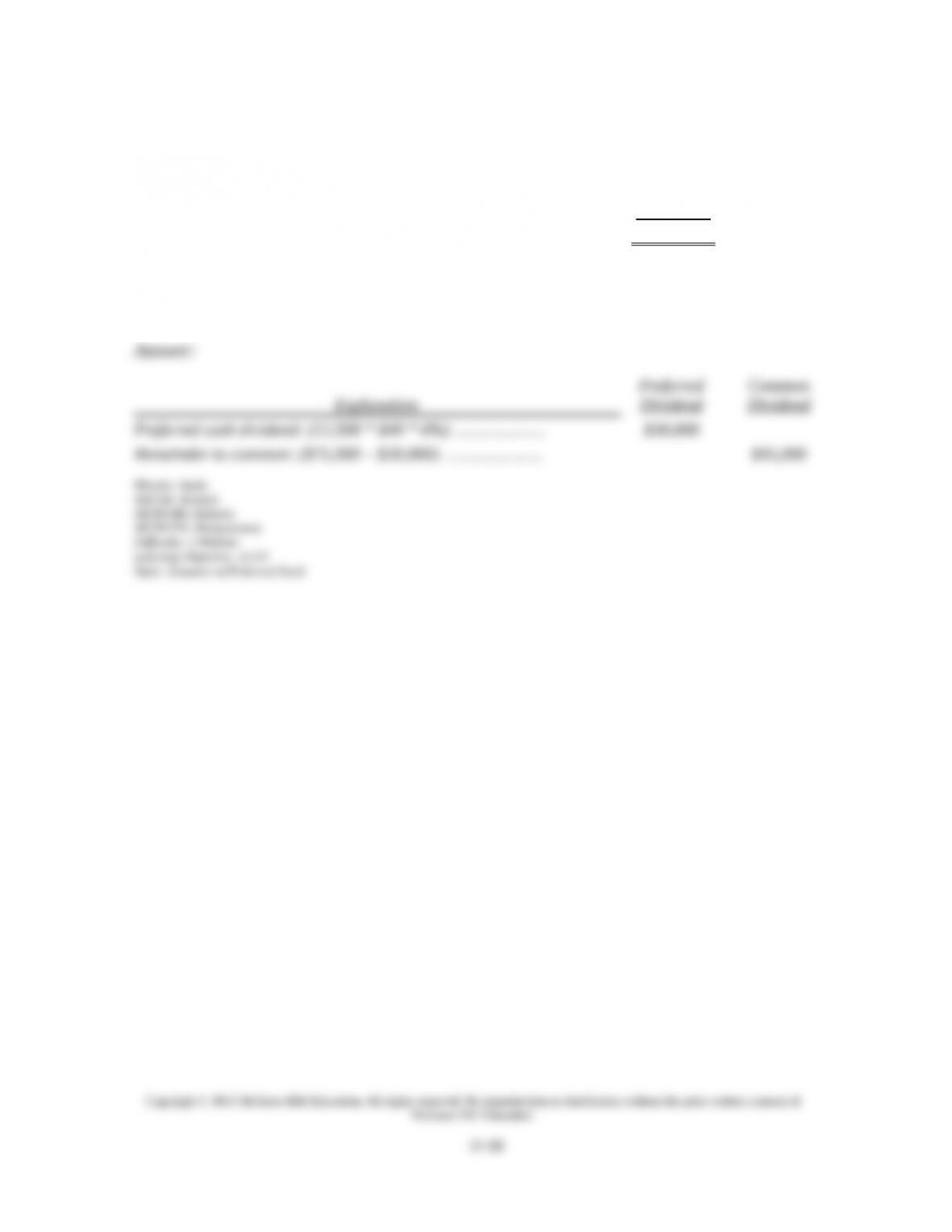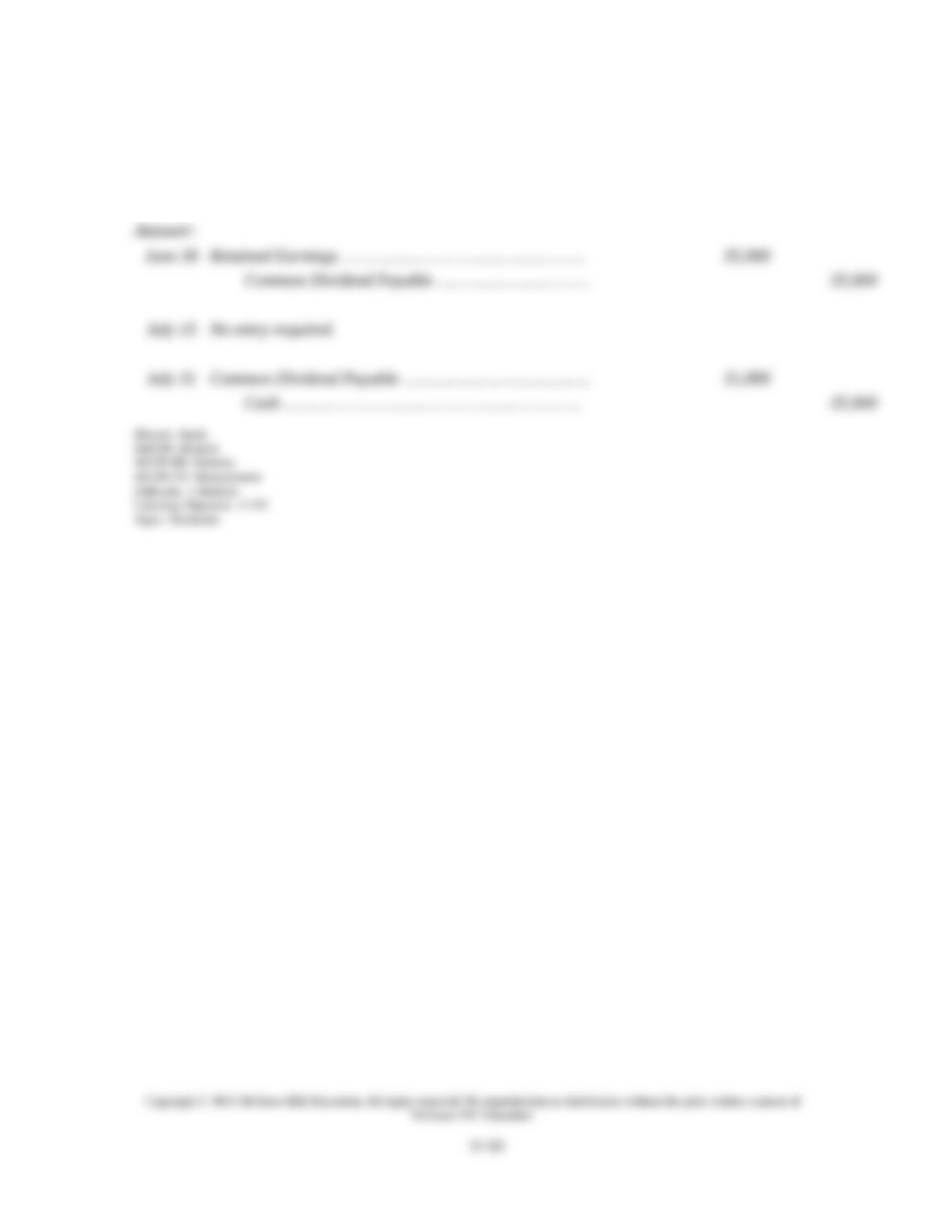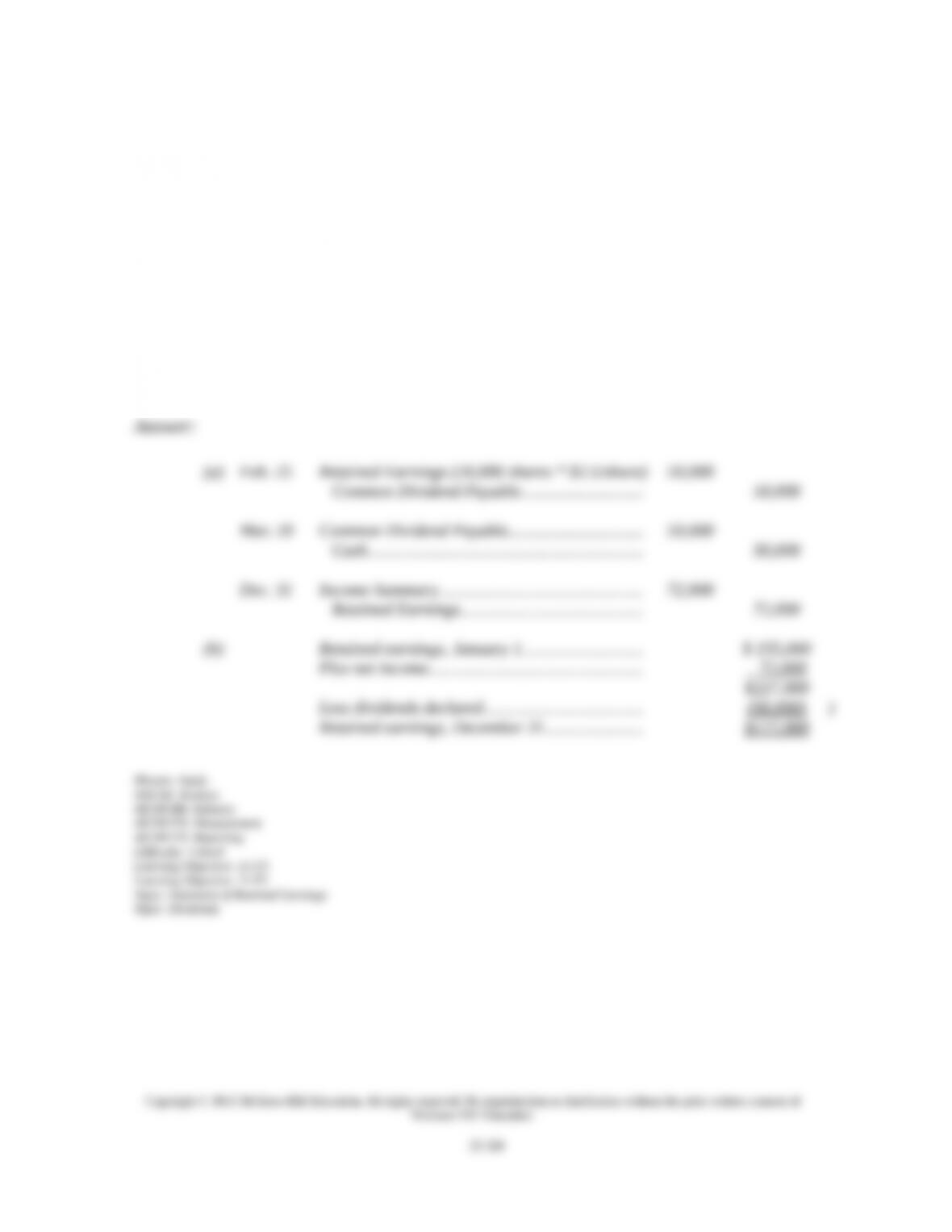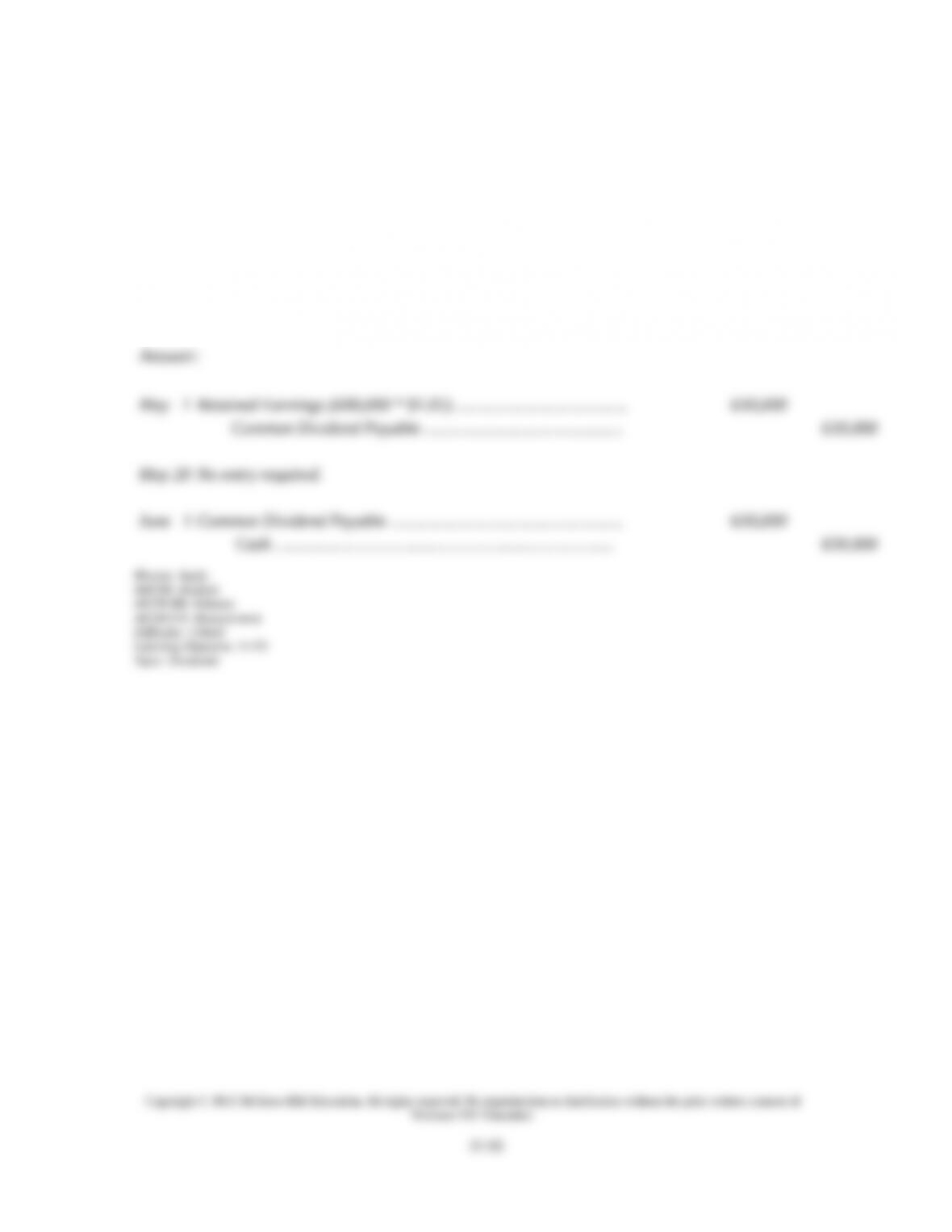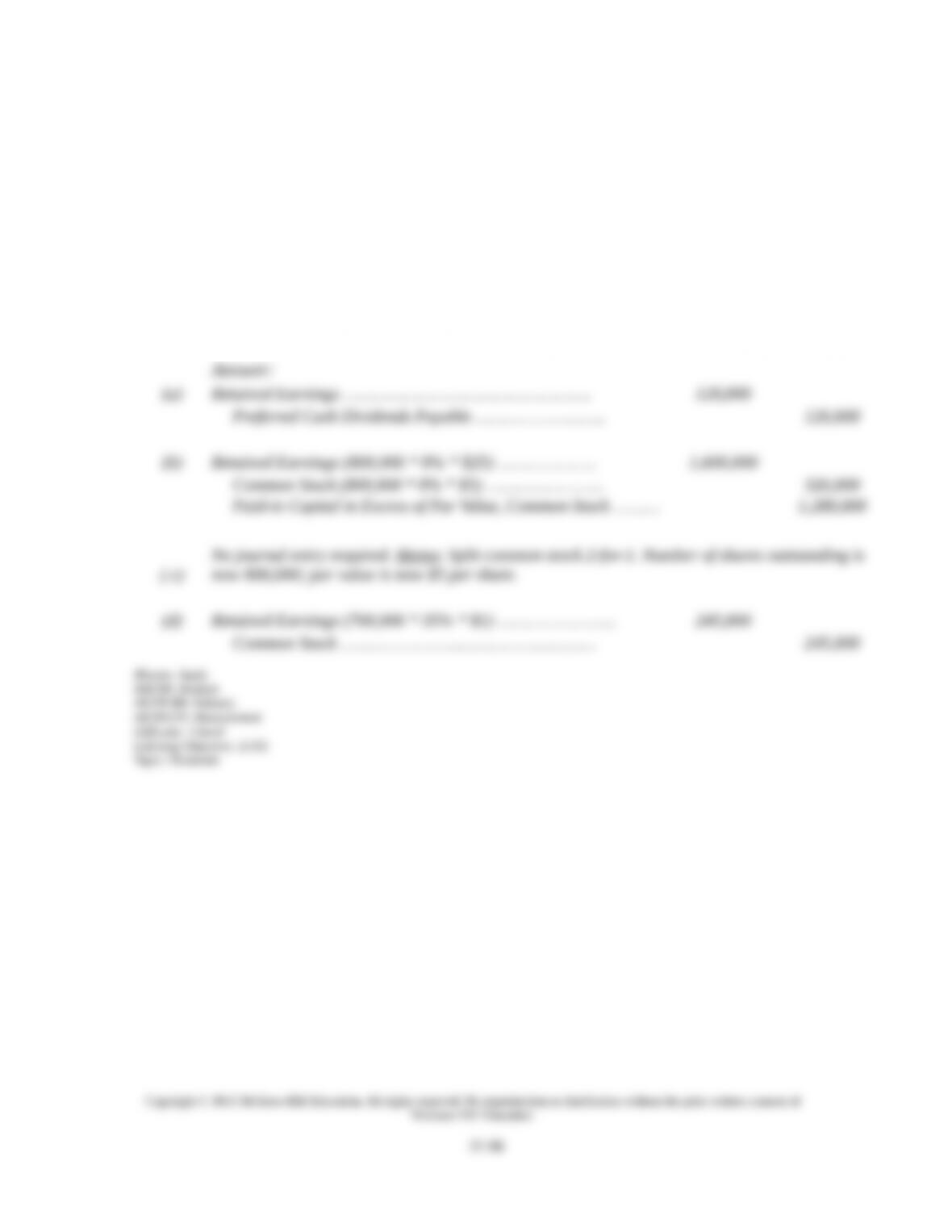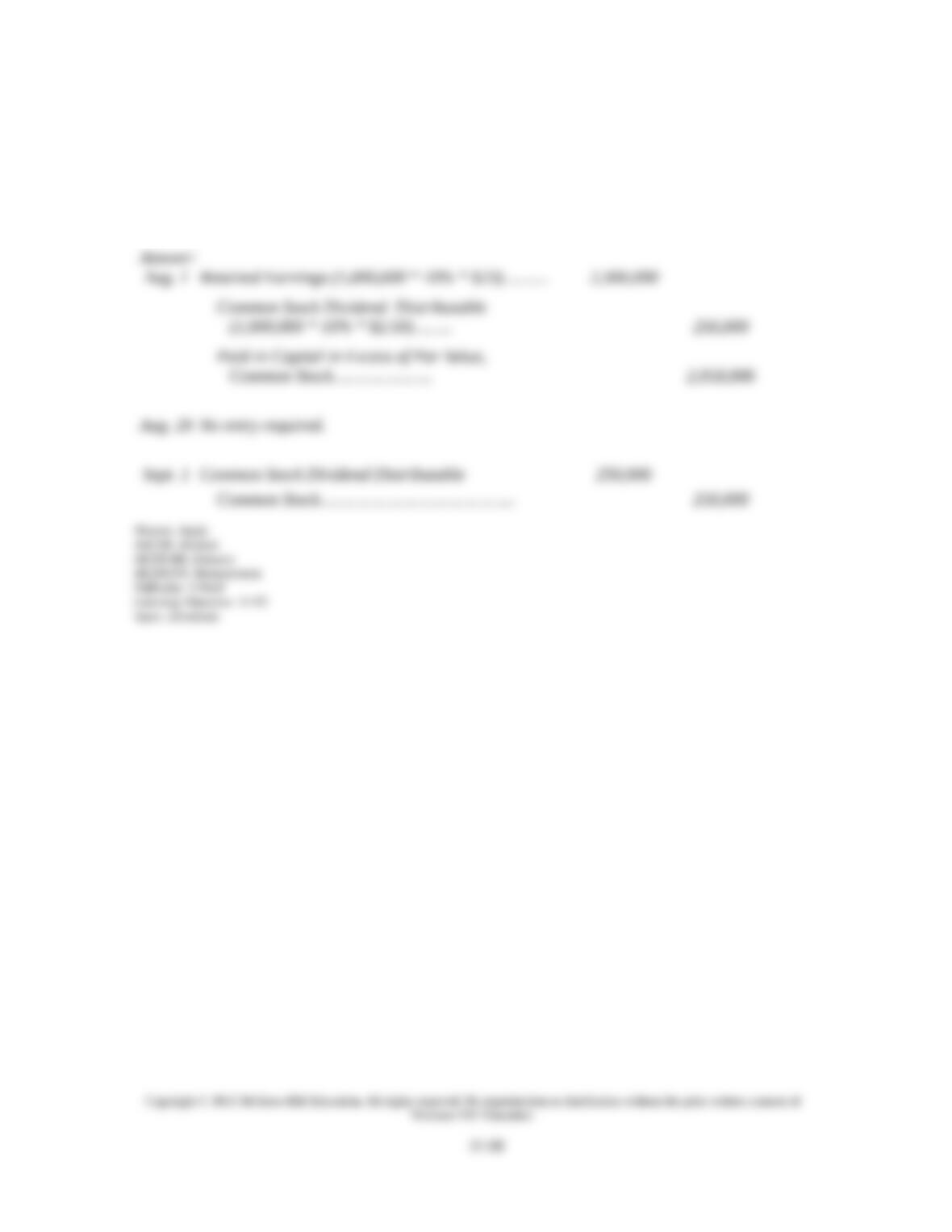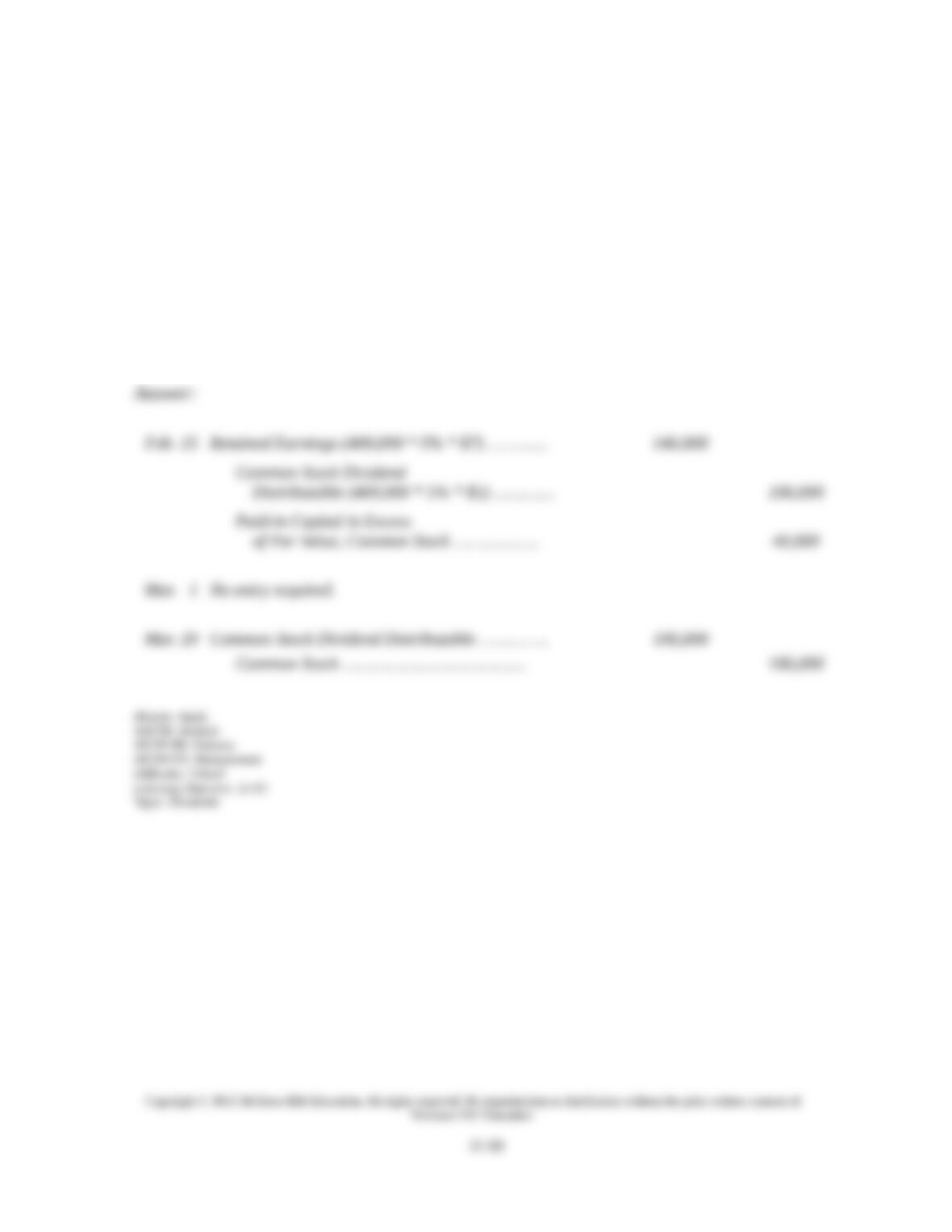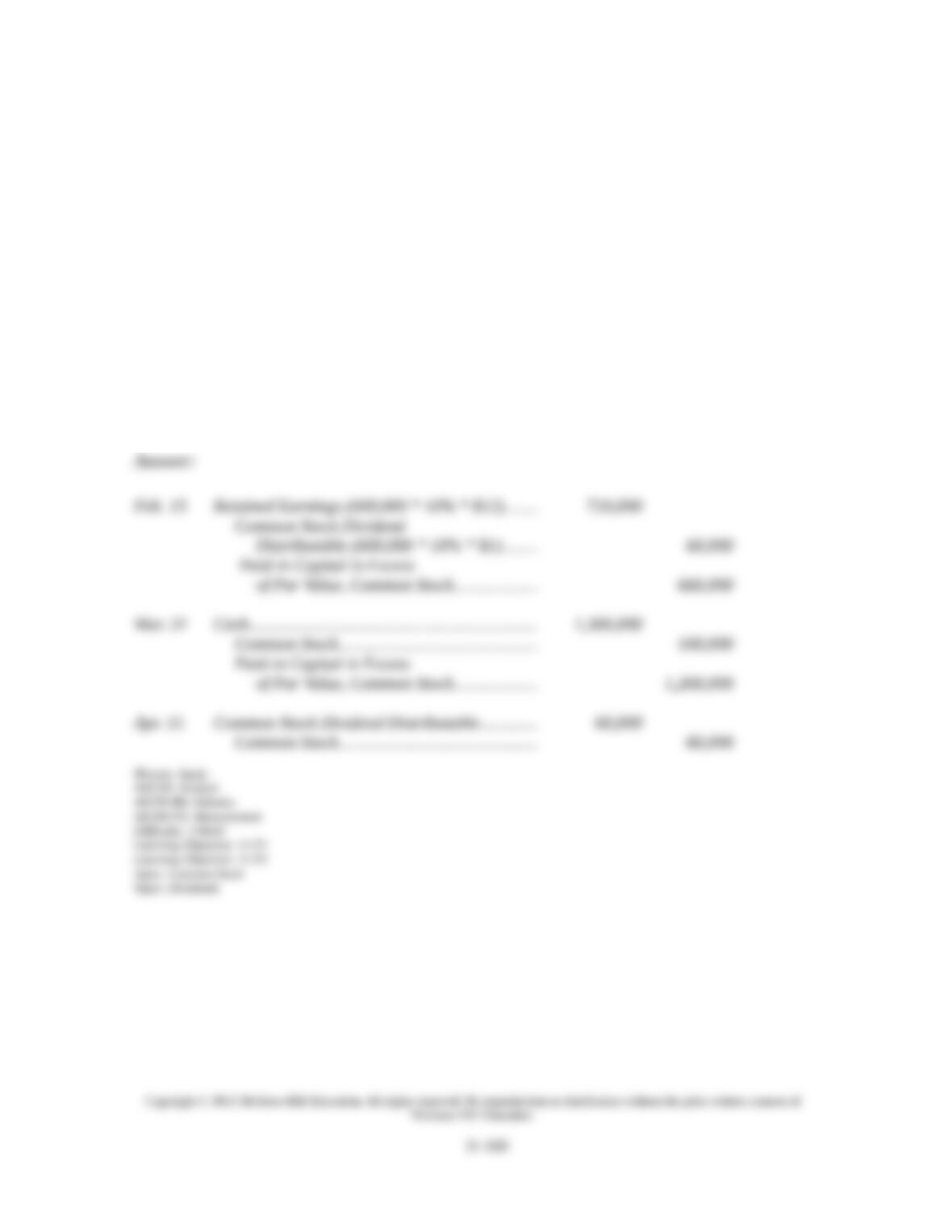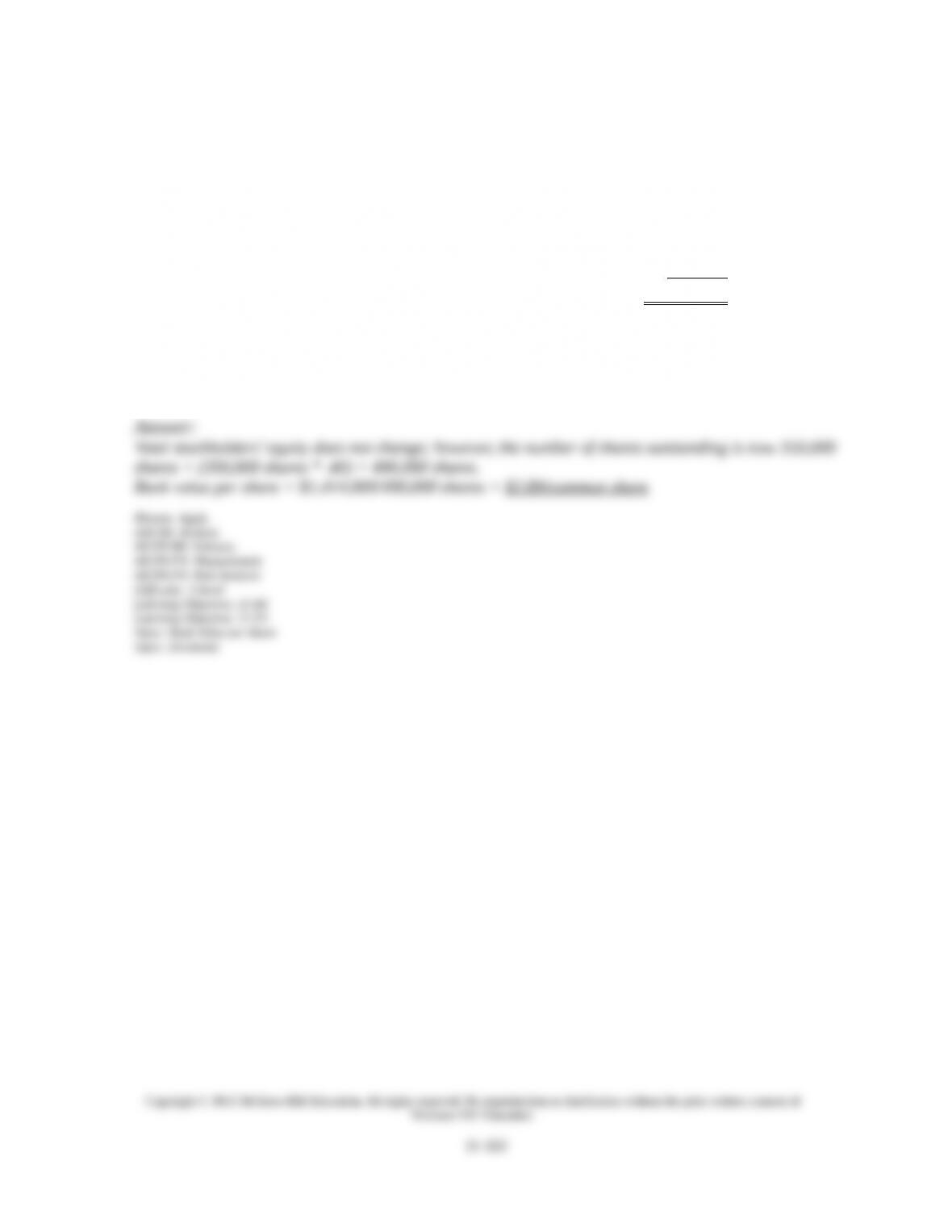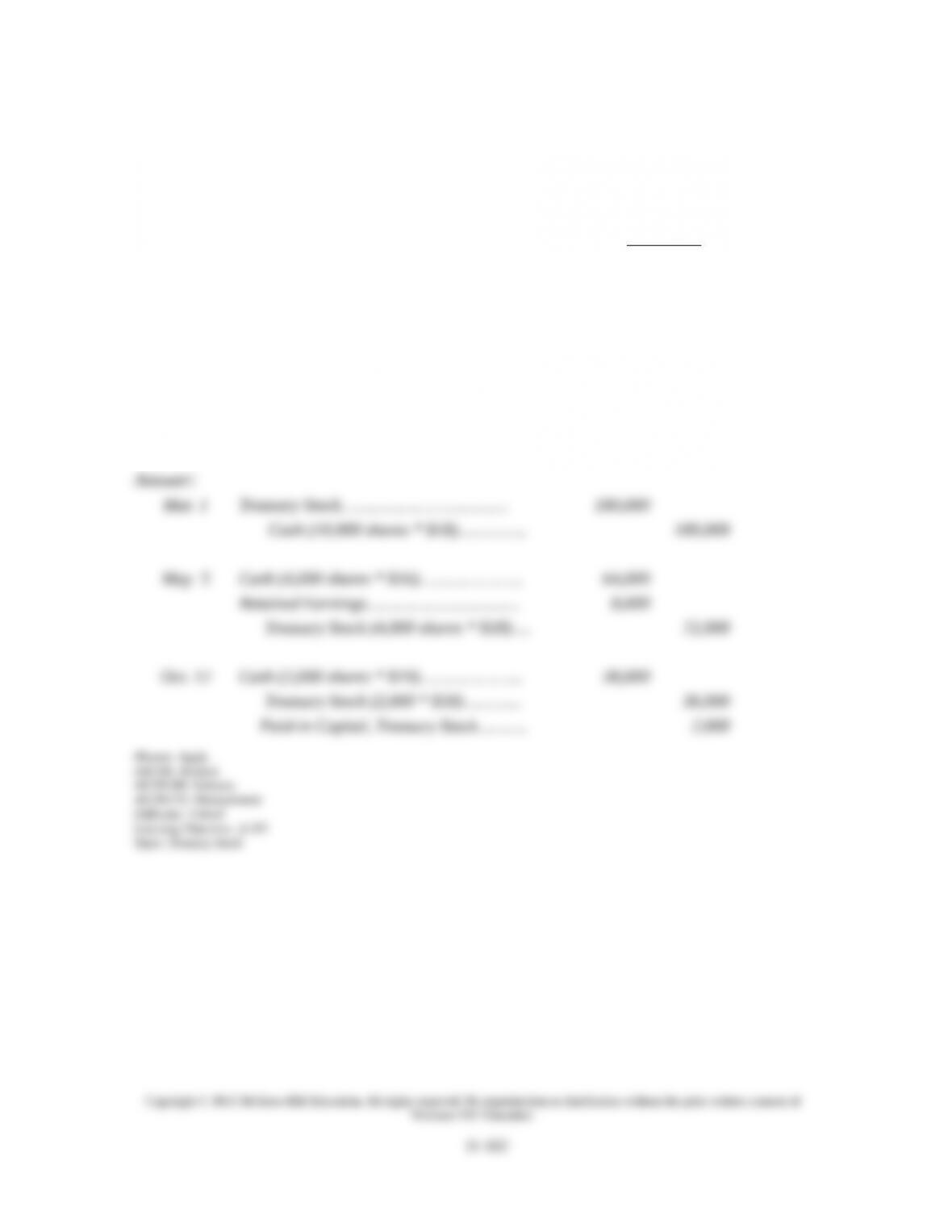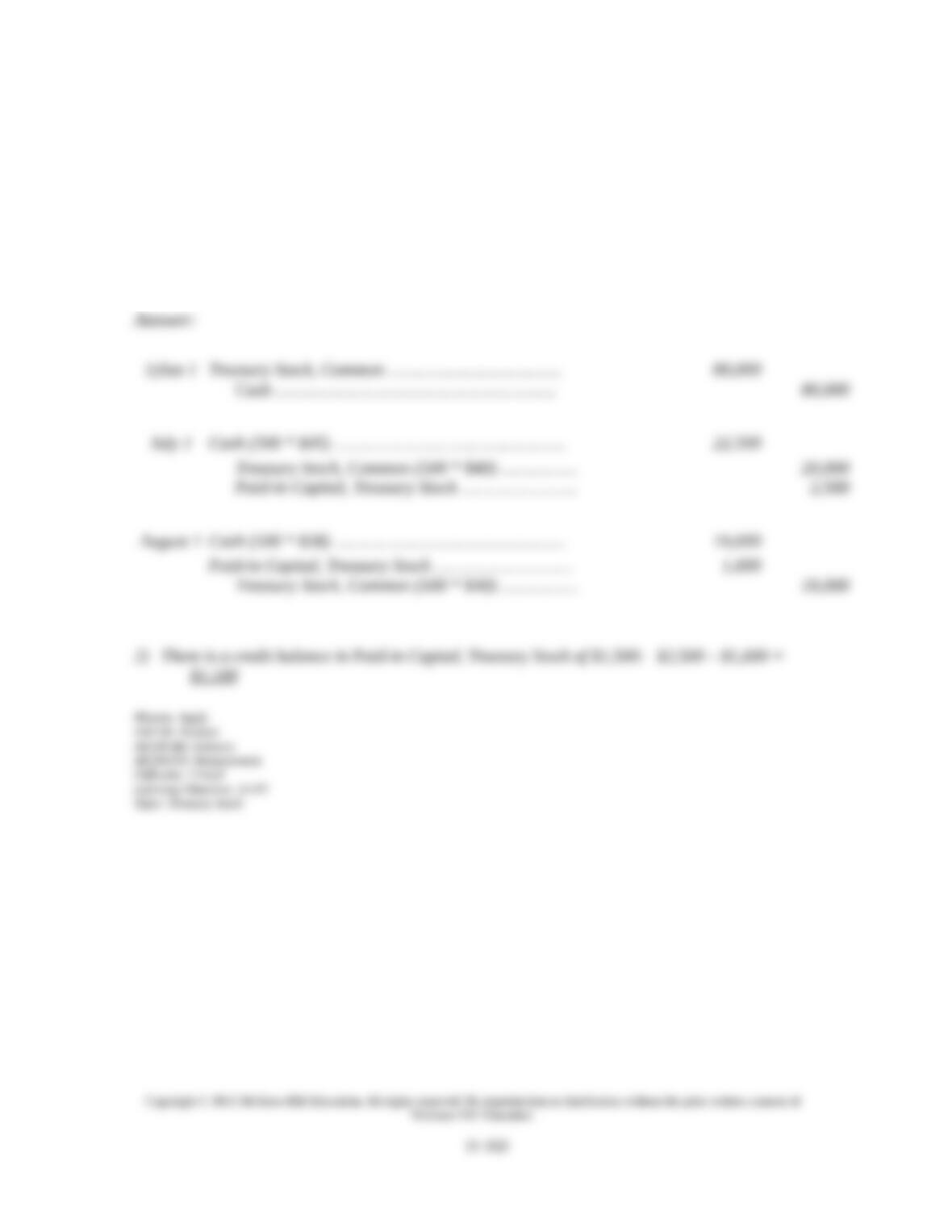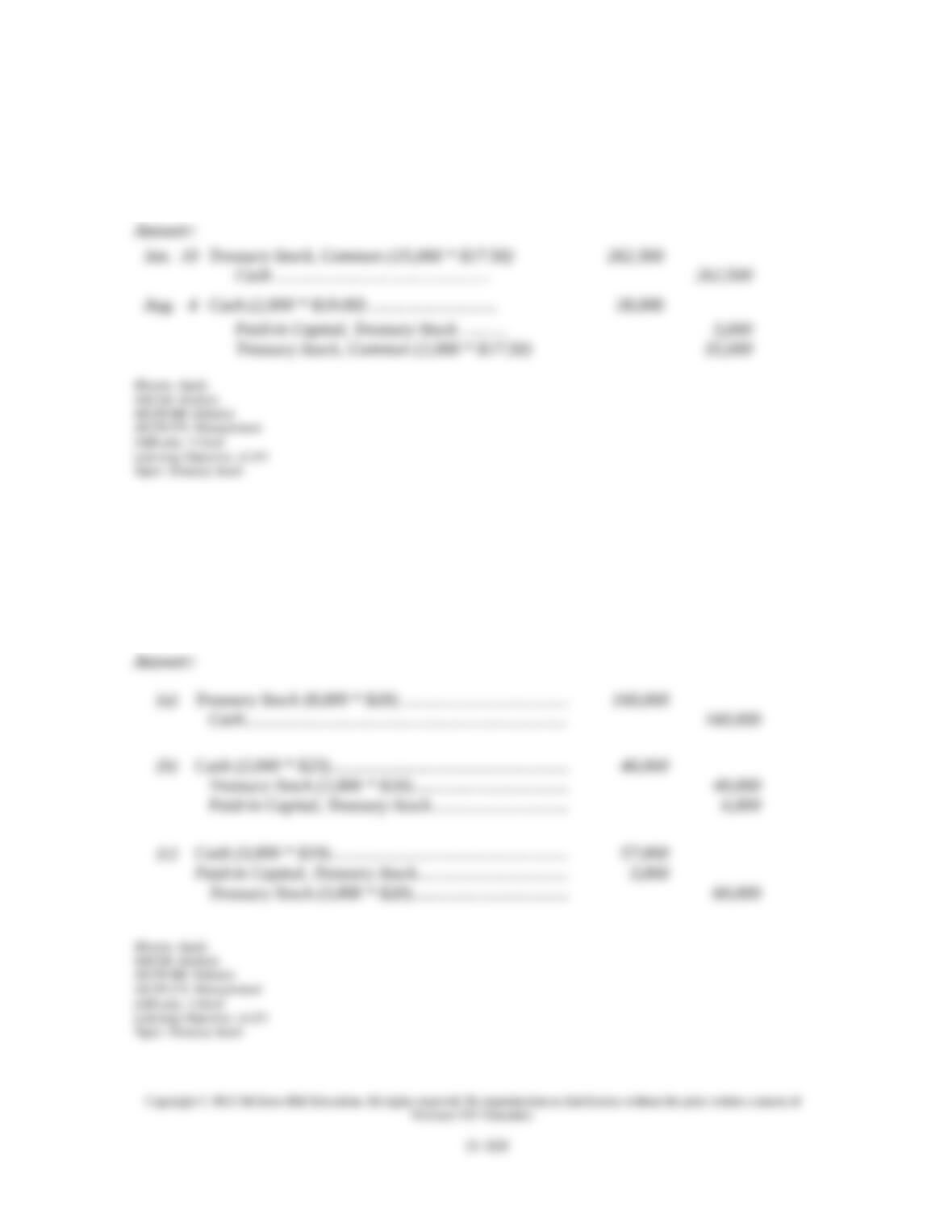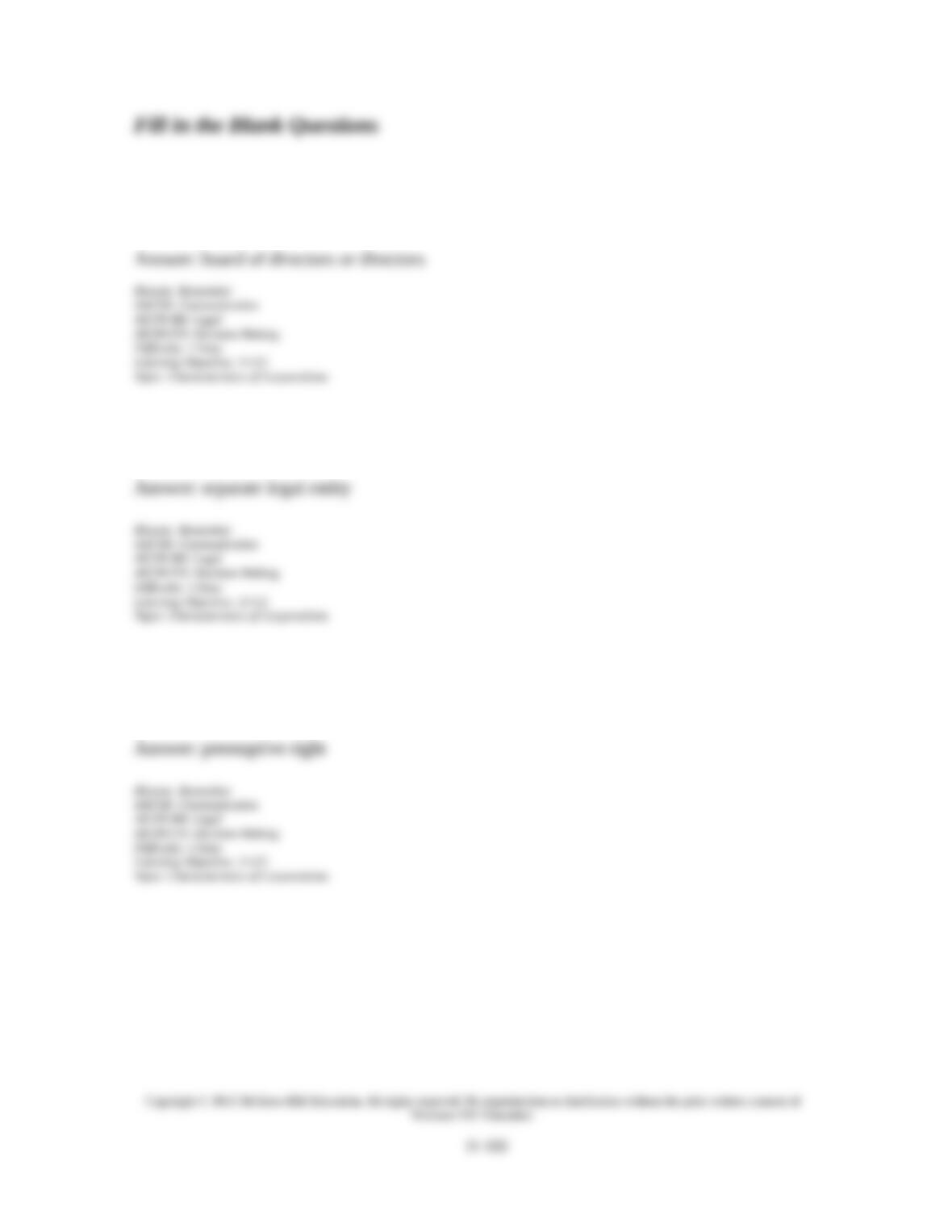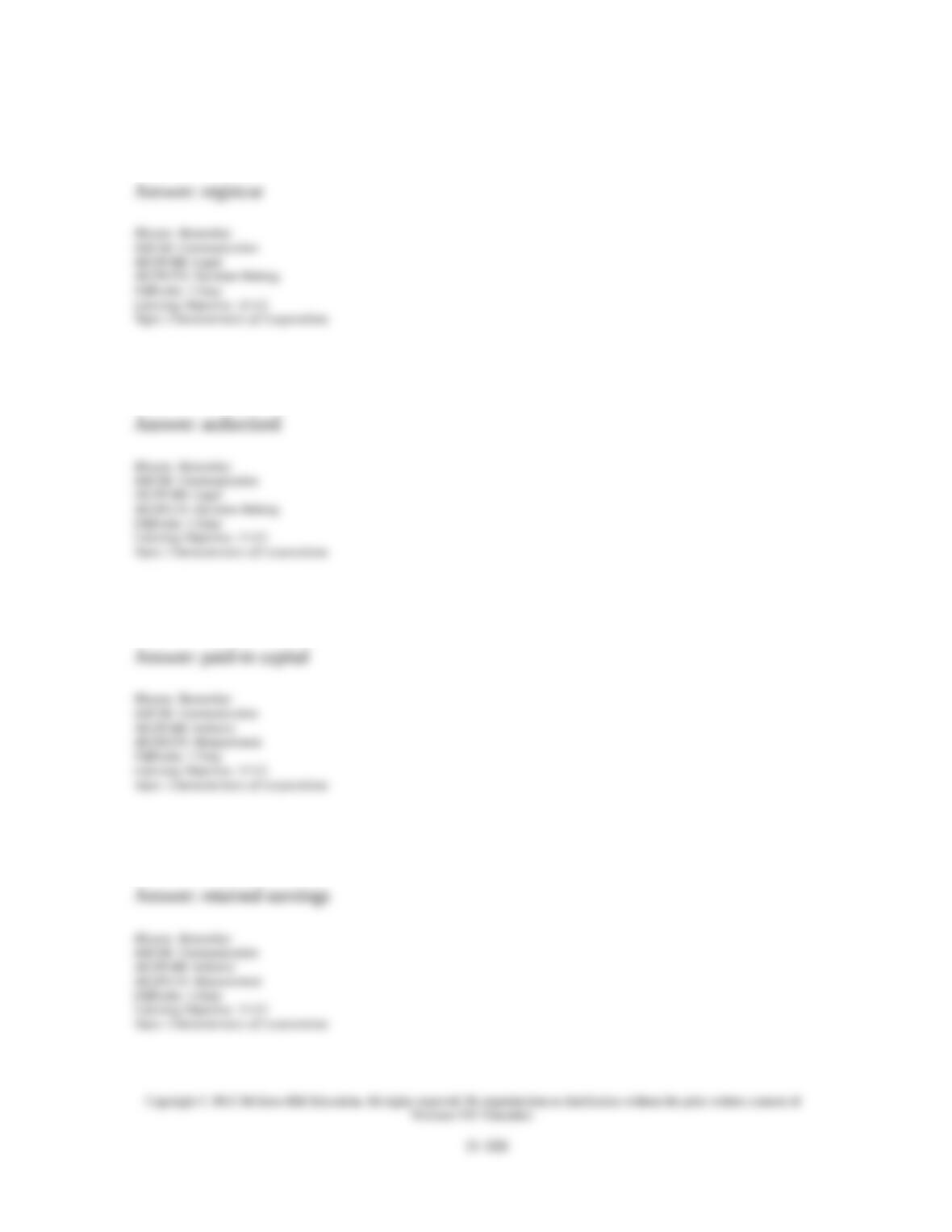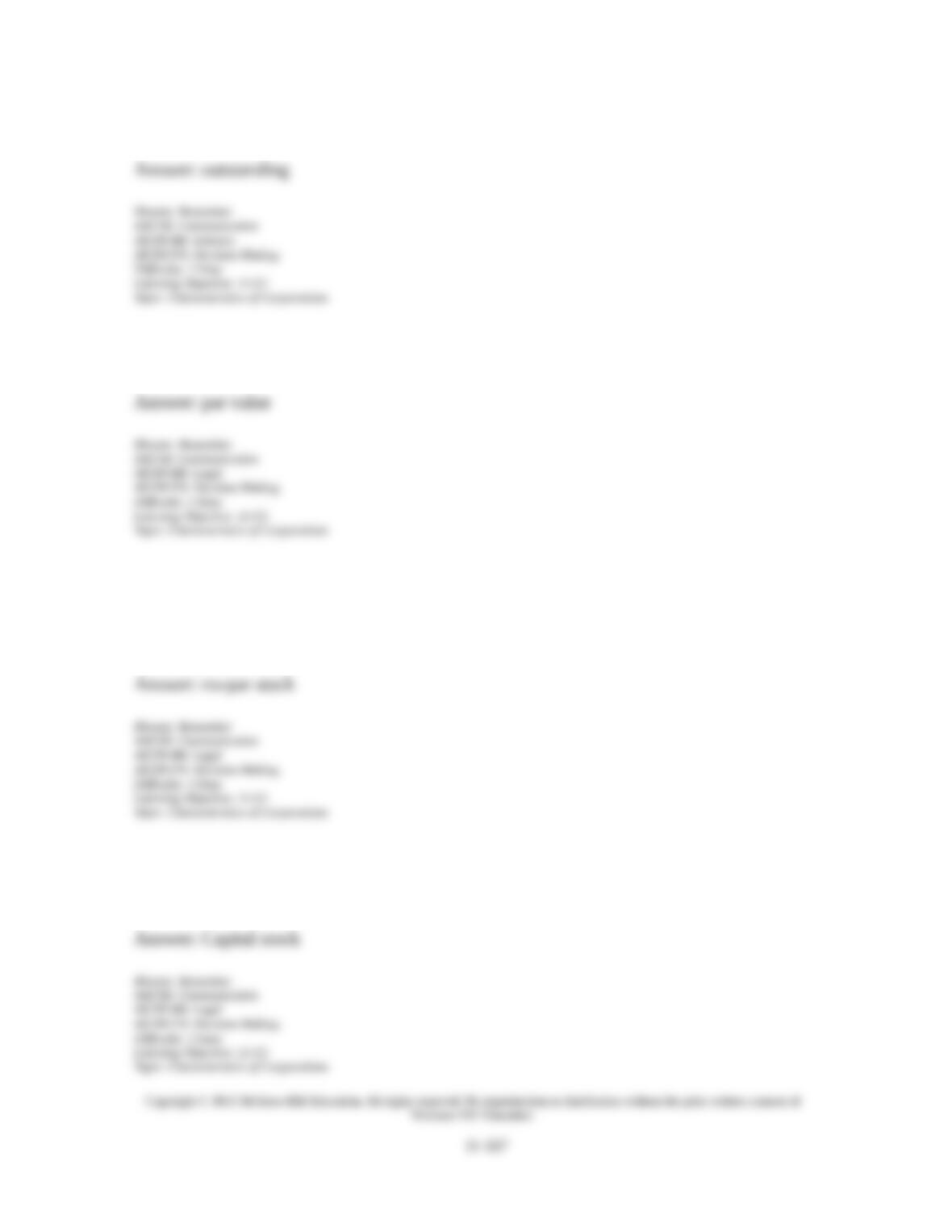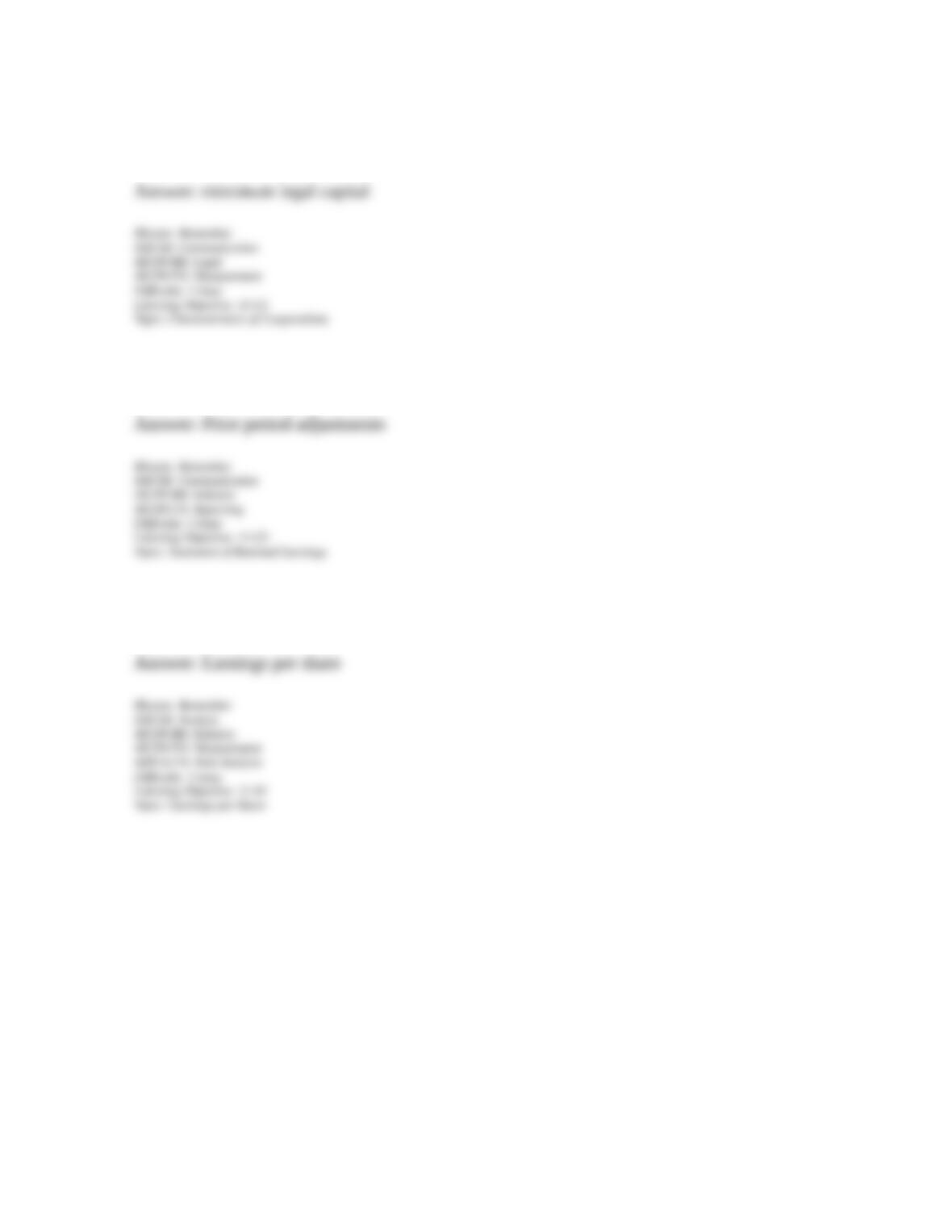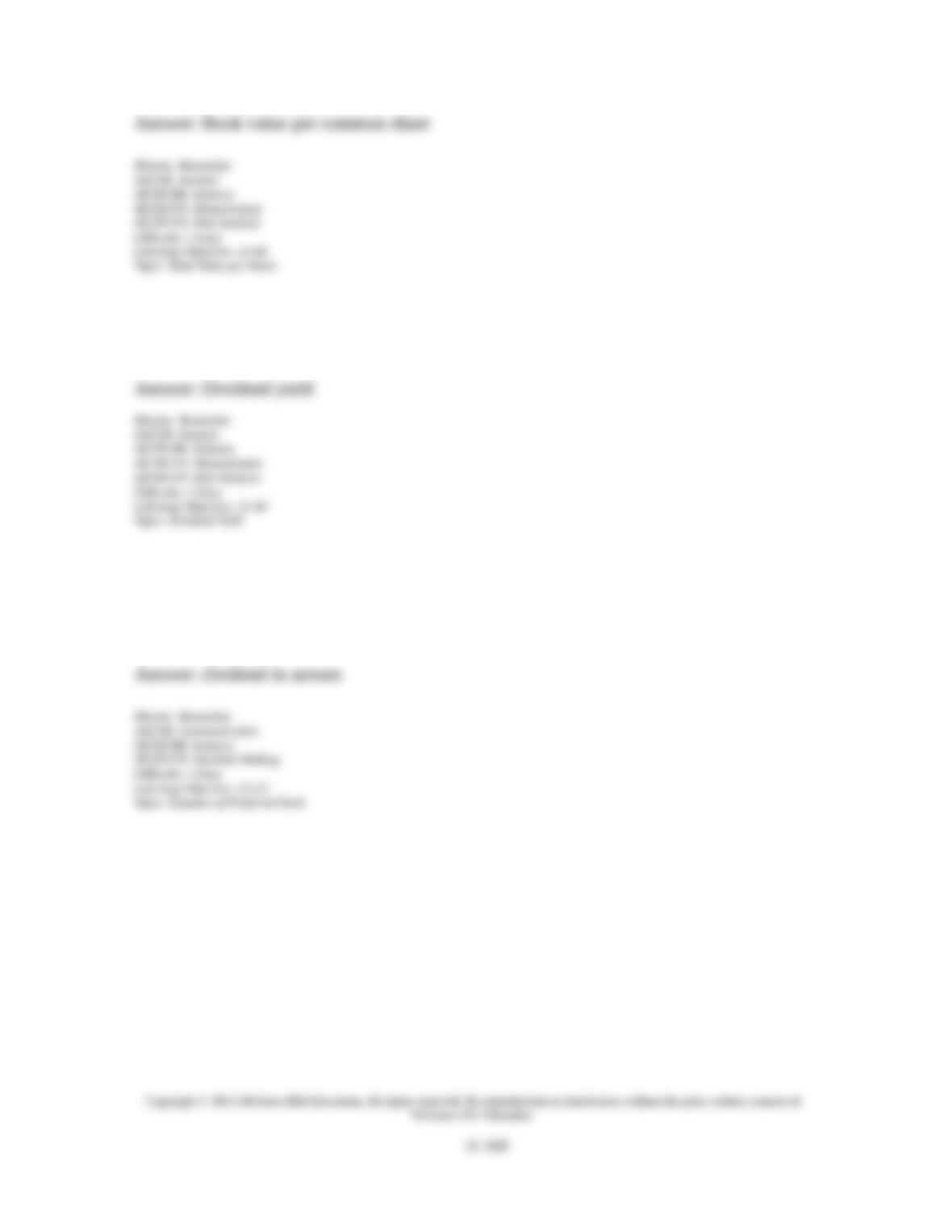161. Prior to June 30, a company has never had any treasury stock transactions. A company
repurchased 100 shares of its $1 par common stock on June 30 for $40 per share. On July 20,
it reissued 50 of these shares at $46 per share. On August 1, it reissued 20 of the shares at $38
per share. What is the journal entry necessary to record the repurchase of stock on June 30?
A. Debit Common Stock $4,000; credit Cash $4,000.
B. Debit Common Stock $100; debit Treasury Stock $3,900; credit Cash $4,000.
C. Debit Treasury Stock $3,900; debit Paid-in Capital, Treasury Stock $100; credit Cash
$4,000.
D. Debit Treasury Stock, Common $4,000; credit Cash $4,000.
E. Debit Cash $4,000; credit Treasury Stock $4,000.
162. Prior to June 30, a company has never had any treasury stock transactions. A company
repurchased 100 shares of its $1 par common stock on June 30 for $40 per share. On July 20,
it reissued 50 of these shares at $46 per share. On August 1, it reissued 20 of the shares at $38
per share. What is the journal entry necessary to record the reissuance of treasury stock on
July 20?
A. Debit Common Stock $2,300; credit Cash $2,300.
B. Debit Common Stock $20; debit Treasury Stock $2,290; credit Cash $2,300.
C. Debit Common Stock $2,300; credit Treasury Stock $2,000; credit Paid-In Capital,
Treasury Stock $300.
D. Debit Cash $2,300; debit Paid-in Capital, Treasury Stock $300; credit Treasury Stock
$2,000.
E. Debit Cash $2,300; credit Treasury Stock $2,300.
























































































